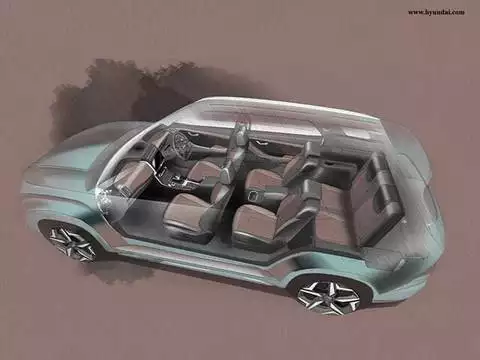Hyundai, a leading global automaker, has made significant strides in automotive design, blending innovation with practicality to create vehicles that resonate with consumers worldwide. This article delves into the unique features that define Hyundai car designs, exploring how they have evolved and what sets them apart in today’s competitive market.
The Evolution of Hyundai Design Philosophy
Since its inception, Hyundai has evolved from producing functional vehicles to becoming a trendsetter in automotive design. The company’s design philosophy emphasizes several key principles:
- Fluidic Sculpture: Introduced in the early 2010s, Hyundai’s Fluidic Sculpture design language marked a departure from traditional boxy shapes to more dynamic and flowing lines. This approach aimed to evoke a sense of motion and grace in Hyundai’s vehicles.
- Sensuous Sportiness: Building upon Fluidic Sculpture, Hyundai introduced the Sensuous Sportiness design philosophy, focusing on proportional beauty, innovative technology integration, and emotional expression through design.
- Eco-friendly Design: In recent years, Hyundai has also prioritized eco-friendly design, incorporating sustainability elements such as lightweight materials and aerodynamic enhancements to improve fuel efficiency and reduce environmental impact.
Key Design Elements in Hyundai Cars
Hyundai cars are characterized by several distinctive design elements that contribute to their appeal and functionality:
- Cascading Grille: One of the most recognizable features across Hyundai’s lineup is the cascading grille, which enhances aerodynamics while making a bold visual statement. This design element often serves as a focal point, lending a sense of character and identity to each model.
- Signature Lighting: Hyundai incorporates advanced lighting technologies, such as LED daytime running lights and dynamic LED headlights, which not only improve visibility but also contribute to the vehicle’s aesthetic appeal.
- Integrated Technology: Hyundai integrates technology seamlessly into its designs, with features like touchscreen infotainment systems, digital instrument clusters, and ergonomic controls that prioritize user experience and connectivity.
- Interior Sophistication: The interior design of Hyundai cars focuses on comfort, functionality, and premium materials. From ergonomic seating to intuitive layouts, Hyundai aims to create a refined and enjoyable driving environment.
Also Read : Exploring the Latest Trends in Hyundai Car Design
Innovative Approaches to Design Challenges
Innovation is at the heart of Hyundai’s design process, enabling the company to tackle various challenges and set new industry standards:
- Advanced Manufacturing Techniques: Hyundai employs advanced manufacturing techniques, such as high-strength steel and robotic assembly lines, to ensure precision engineering and consistent quality across its vehicle lineup.
- Design for Safety: Safety is paramount in Hyundai’s design philosophy. The company integrates passive and active safety features, including advanced driver assistance systems (ADAS) and structural reinforcements, to enhance occupant protection and crashworthiness.
- Future-Forward Design Concepts: Hyundai explores future-forward design concepts through concept cars and prototype vehicles, showcasing innovative technologies such as autonomous driving capabilities, augmented reality displays, and sustainable materials.
Case Studies: Iconic Hyundai Models
To illustrate Hyundai’s design evolution and success, let’s explore two iconic models:
1. Hyundai Sonata
The Hyundai Sonata exemplifies Hyundai’s commitment to sleek design and technological innovation. With its bold cascading grille, LED lighting accents, and aerodynamic profile, the Sonata combines style with efficiency. Interior features like the digital cockpit and premium materials elevate the driving experience, making it a popular choice among midsize sedan enthusiasts.
2. Hyundai Tucson
The Hyundai Tucson embodies Hyundai’s Sensuous Sportiness design philosophy, featuring sculpted lines, a striking front fascia with a parametric grille, and distinctive LED lighting signatures. The Tucson’s spacious interior, configurable cargo space, and advanced safety features appeal to families and adventure seekers alike, highlighting Hyundai’s versatility in design and functionality.
Conclusion
Hyundai continues to push boundaries in automotive design, blending innovation, functionality, and aesthetic appeal to create vehicles that captivate global audiences. From the Fluidic Sculpture era to the Sensuous Sportiness philosophy, Hyundai’s designs evolve with technological advancements and consumer preferences. As Hyundai pursues sustainability and integrates cutting-edge technologies, its commitment to design excellence remains a cornerstone of its success in the automotive industry.
By understanding Hyundai’s unique design features and evolutionary journey, consumers gain insight into why Hyundai cars are celebrated for their style, performance, and forward-thinking approach.
This structured approach provides a comprehensive look at Hyundai’s design philosophy, key elements, innovations, and iconic models, backed by relevant examples and insights.
(source)
Originally posted 2024-07-17 07:08:28.
